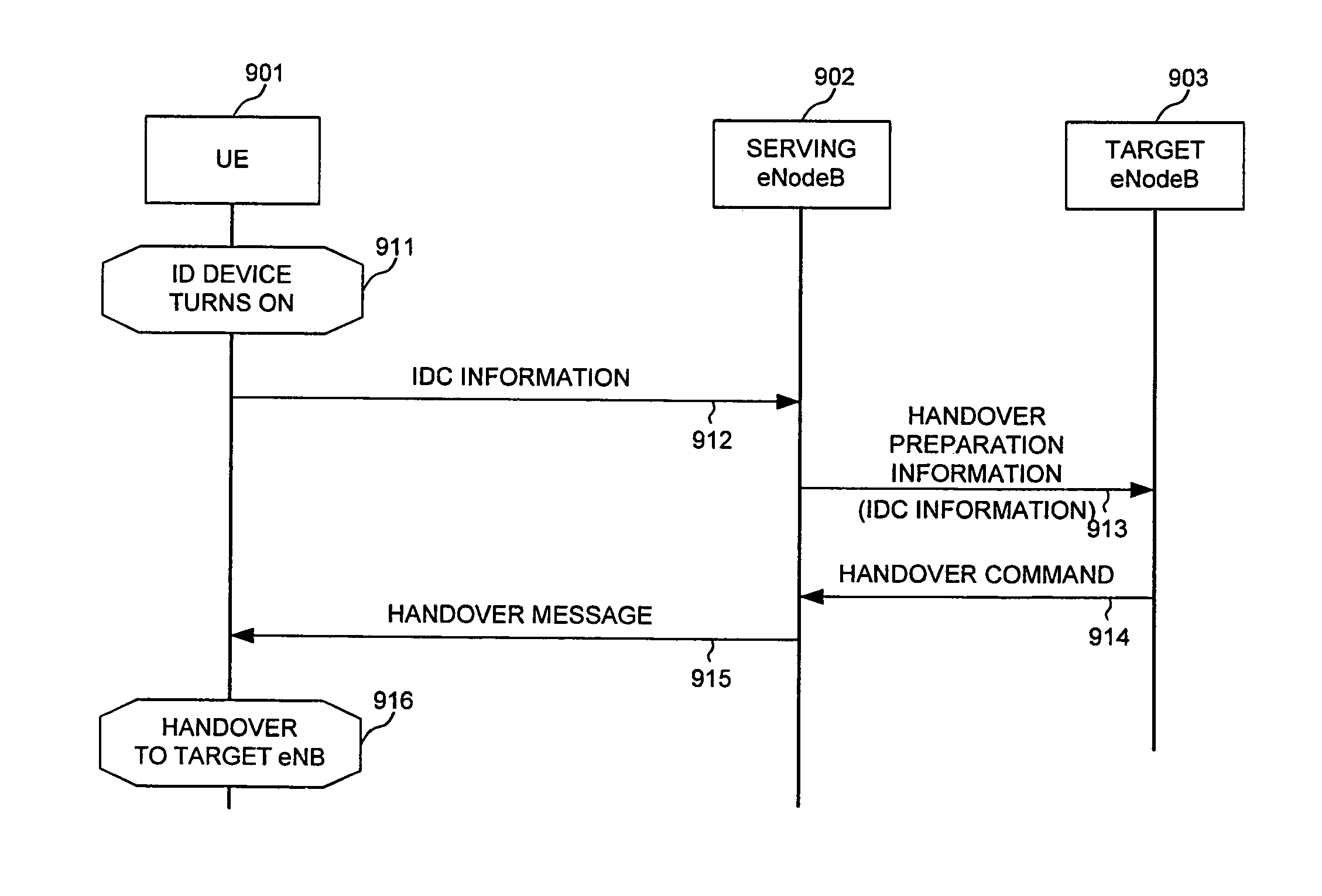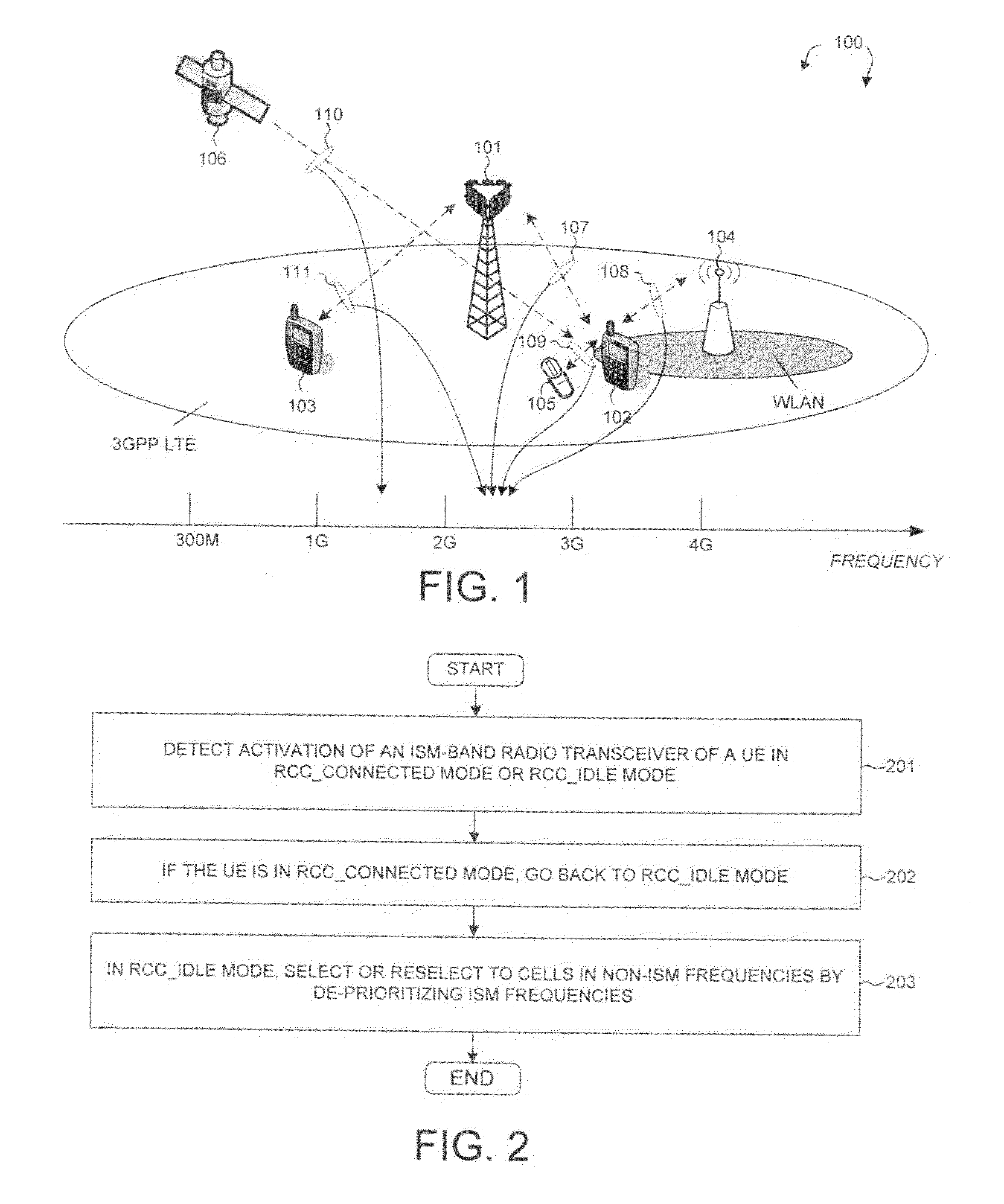Method for wireless communication in a device with co-existence radio
a wireless communication and radio interface technology, applied in data switching networks, instruments, frequency-division multiplexes, etc., can solve problems such as coexistence interference, achieve the effects of avoiding ping-pong effect, avoiding ping-pong effect, and reducing interferen
- Summary
- Abstract
- Description
- Claims
- Application Information
AI Technical Summary
Benefits of technology
Problems solved by technology
Method used
Image
Examples
first embodiment
[0035]FIG. 5 illustrates a method of signaling in-device coexistence (IDC) via capability negotiation in a wireless communication system 500. Wireless communication system 500 comprises-a UE501, an eNB502, and a MME503. In step 511, UE501 and its serving eNB502 performs RRC connection establishment procedure (e.g., UE501 in RRC_CONNECTED STATE). In step 512, eNB502 transmits a UE capability request to MME503. In response, MME503 transmits a UE capability response to eNB502 in step 513. MME503 obtains UE capability information from an earlier registration procedure. UE501 is a UE having an LTE radio module and an ID device that can introduce IDC interference to the LTE module. In a first embodiment, a new parameter for indicating the ID device is added in UE capability information. Whenever UE501 attaches to the network, the existence of the ID device is indicated via the UE capability information. This embodiment is not backward compatible because a new ASN.1 code-point is needed to...
second embodiment
[0036]In a second embodiment, the UE capability information includes the frequency bands supported by UE501, and the existence of the ID device is implicitly indicated by the change of supported frequency bands. For example, the UE supported frequency bands originally include Band 40 (e.g., 2300-2400 MHz) for LTE TDD mode. In step 514, UE501 turns on its ID device, which operates in ISM frequency band. To mitigate IDC interference, UE501 performs de-registration procedure with MME503 in step 515. After de-registration, UE501 goes back to RRC_IDLE state in step 516. UE501 then registers with the system again and initiates a track area update (TAU) procedure with MME503 in step 517. During the TAU procedure, UE501 updates its capability to MMS503 indicating that Band 40 is no longer supported by UE501. By removing Band 40 from the supported frequency bands, UE501 implicitly signals the MME and eNB the existence of ISM band application on UE501. This embodiment is backward compatible a...
PUM
 Login to View More
Login to View More Abstract
Description
Claims
Application Information
 Login to View More
Login to View More - R&D
- Intellectual Property
- Life Sciences
- Materials
- Tech Scout
- Unparalleled Data Quality
- Higher Quality Content
- 60% Fewer Hallucinations
Browse by: Latest US Patents, China's latest patents, Technical Efficacy Thesaurus, Application Domain, Technology Topic, Popular Technical Reports.
© 2025 PatSnap. All rights reserved.Legal|Privacy policy|Modern Slavery Act Transparency Statement|Sitemap|About US| Contact US: help@patsnap.com



